Lei Lin
Attention as a Compass: Efficient Exploration for Process-Supervised RL in Reasoning Models
Sep 30, 2025Abstract:Reinforcement Learning (RL) has shown remarkable success in enhancing the reasoning capabilities of Large Language Models (LLMs). Process-Supervised RL (PSRL) has emerged as a more effective paradigm compared to outcome-based RL. However, existing PSRL approaches suffer from limited exploration efficiency, both in terms of branching positions and sampling. In this paper, we introduce a novel PSRL framework (AttnRL), which enables efficient exploration for reasoning models. Motivated by preliminary observations that steps exhibiting high attention scores correlate with reasoning behaviors, we propose to branch from positions with high values. Furthermore, we develop an adaptive sampling strategy that accounts for problem difficulty and historical batch size, ensuring that the whole training batch maintains non-zero advantage values. To further improve sampling efficiency, we design a one-step off-policy training pipeline for PSRL. Extensive experiments on multiple challenging mathematical reasoning benchmarks demonstrate that our method consistently outperforms prior approaches in terms of performance and sampling and training efficiency.
An Attention-Based Denoising Framework for Personality Detection in Social Media Texts
Nov 16, 2023Abstract:In social media networks, users produce a large amount of text content anytime, providing researchers with a valuable approach to digging for personality-related information. Personality detection based on user-generated texts is a universal method that can be used to build user portraits. The presence of noise in social media texts hinders personality detection. However, previous studies have not fully addressed this challenge. Inspired by the scanning reading technique, we propose an attention-based information extraction mechanism (AIEM) for long texts, which is applied to quickly locate valuable pieces of information, and focus more attention on the deep semantics of key pieces. Then, we provide a novel attention-based denoising framework (ADF) for personality detection tasks and achieve state-of-the-art performance on two commonly used datasets. Notably, we obtain an average accuracy improvement of 10.2% on the gold standard Twitter-Myers-Briggs Type Indicator (Twitter-MBTI) dataset. We made our code publicly available on GitHub. We shed light on how AIEM works to magnify personality-related signals.
Ask One More Time: Self-Agreement Improves Reasoning of Language Models in All Scenarios
Nov 14, 2023



Abstract:Although chain-of-thought (CoT) prompting combined with language models has achieved encouraging results on complex reasoning tasks, the naive greedy decoding used in CoT prompting usually causes the repetitiveness and local optimality. To address this shortcoming, ensemble-optimization tries to obtain multiple reasoning paths to get the final answer assembly. However, current ensemble-optimization methods either simply employ rule-based post-processing such as \textit{self-consistency}, or train an additional model based on several task-related human annotations to select the best one among multiple reasoning paths, yet fail to generalize to realistic settings where the type of input questions is unknown or the answer format of reasoning paths is unknown. To avoid their limitations, we propose \textbf{self-agreement}, a generalizable ensemble-optimization method applying in almost all scenarios where the type of input questions and the answer format of reasoning paths may be known or unknown. Self-agreement firstly samples from language model's decoder to generate a \textit{diverse} set of reasoning paths, and subsequently prompts the language model \textit{one more time} to determine the optimal answer by selecting the most \textit{agreed} answer among the sampled reasoning paths. Self-agreement simultaneously achieves remarkable performance on six public reasoning benchmarks and superior generalization capabilities.
Skywork: A More Open Bilingual Foundation Model
Oct 30, 2023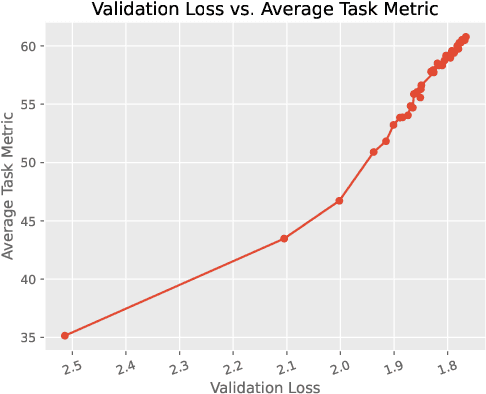
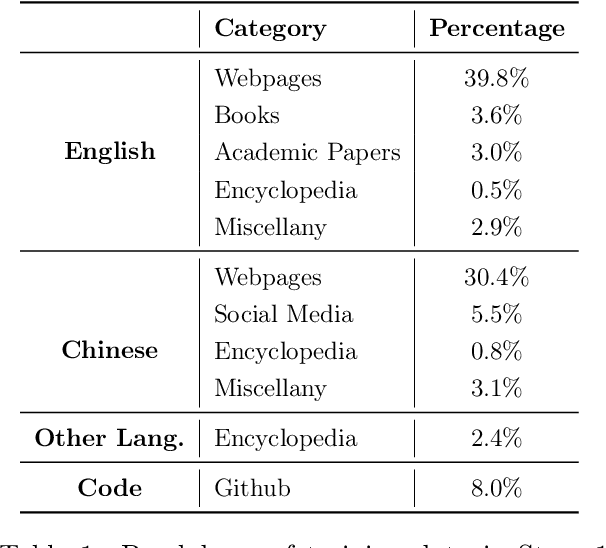
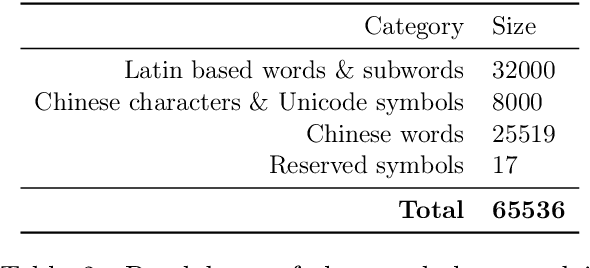
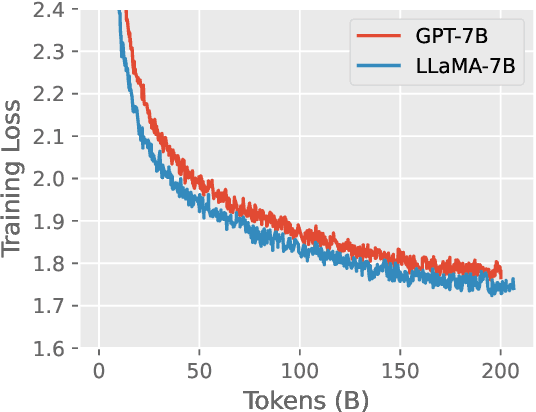
Abstract:In this technical report, we present Skywork-13B, a family of large language models (LLMs) trained on a corpus of over 3.2 trillion tokens drawn from both English and Chinese texts. This bilingual foundation model is the most extensively trained and openly published LLMs of comparable size to date. We introduce a two-stage training methodology using a segmented corpus, targeting general purpose training and then domain-specific enhancement training, respectively. We show that our model not only excels on popular benchmarks, but also achieves \emph{state of the art} performance in Chinese language modeling on diverse domains. Furthermore, we propose a novel leakage detection method, demonstrating that test data contamination is a pressing issue warranting further investigation by the LLM community. To spur future research, we release Skywork-13B along with checkpoints obtained during intermediate stages of the training process. We are also releasing part of our SkyPile corpus, a collection of over 150 billion tokens of web text, which is the largest high quality open Chinese pre-training corpus to date. We hope Skywork-13B and our open corpus will serve as a valuable open-source resource to democratize access to high-quality LLMs.
SkyMath: Technical Report
Oct 26, 2023Abstract:Large language models (LLMs) have shown great potential to solve varieties of natural language processing (NLP) tasks, including mathematical reasoning. In this work, we present SkyMath, a large language model for mathematics with 13 billion parameters. By applying self-compare fine-tuning, we have enhanced mathematical reasoning abilities of Skywork-13B-Base remarkably. On GSM8K, SkyMath outperforms all known open-source models of similar size and has established a new SOTA performance.
KwaiYiiMath: Technical Report
Oct 19, 2023



Abstract:Recent advancements in large language models (LLMs) have demonstrated remarkable abilities in handling a variety of natural language processing (NLP) downstream tasks, even on mathematical tasks requiring multi-step reasoning. In this report, we introduce the KwaiYiiMath which enhances the mathematical reasoning abilities of KwaiYiiBase1, by applying Supervised Fine-Tuning (SFT) and Reinforced Learning from Human Feedback (RLHF), including on both English and Chinese mathematical tasks. Meanwhile, we also constructed a small-scale Chinese primary school mathematics test set (named KMath), consisting of 188 examples to evaluate the correctness of the problem-solving process generated by the models. Empirical studies demonstrate that KwaiYiiMath can achieve state-of-the-art (SOTA) performance on GSM8k, CMath, and KMath compared with the similar size models, respectively.
Layer-wise Representation Fusion for Compositional Generalization
Jul 20, 2023



Abstract:Despite successes across a broad range of applications, sequence-to-sequence models' construct of solutions are argued to be less compositional than human-like generalization. There is mounting evidence that one of the reasons hindering compositional generalization is representations of the encoder and decoder uppermost layer are entangled. In other words, the syntactic and semantic representations of sequences are twisted inappropriately. However, most previous studies mainly concentrate on enhancing token-level semantic information to alleviate the representations entanglement problem, rather than composing and using the syntactic and semantic representations of sequences appropriately as humans do. In addition, we explain why the entanglement problem exists from the perspective of recent studies about training deeper Transformer, mainly owing to the ``shallow'' residual connections and its simple, one-step operations, which fails to fuse previous layers' information effectively. Starting from this finding and inspired by humans' strategies, we propose \textsc{FuSion} (\textbf{Fu}sing \textbf{S}yntactic and Semant\textbf{i}c Representati\textbf{on}s), an extension to sequence-to-sequence models to learn to fuse previous layers' information back into the encoding and decoding process appropriately through introducing a \emph{fuse-attention module} at each encoder and decoder layer. \textsc{FuSion} achieves competitive and even \textbf{state-of-the-art} results on two realistic benchmarks, which empirically demonstrates the effectiveness of our proposal.
Learn to Compose Syntactic and Semantic Representations Appropriately for Compositional Generalization
May 20, 2023Abstract:Recent studies have shown that sequence-to-sequence (Seq2Seq) models are limited in solving the compositional generalization (CG) tasks, failing to systematically generalize to unseen compositions of seen components. There is mounting evidence that one of the reasons hindering CG is the representation of the encoder uppermost layer is entangled. In other words, the syntactic and semantic representations of sequences are twisted inappropriately. However, most previous studies mainly concentrate on enhancing semantic information at token-level, rather than composing the syntactic and semantic representations of sequences appropriately as humans do. In addition, we consider the representation entanglement problem they found is not comprehensive, and further hypothesize that source keys and values representations passing into different decoder layers are also entangled. Staring from this intuition and inspired by humans' strategies for CG, we propose COMPSITION (Compose Syntactic and Semantic Representations), an extension to Seq2Seq models to learn to compose representations of different encoder layers appropriately for generating different keys and values passing into different decoder layers through introducing a composed layer between the encoder and decoder. COMPSITION achieves competitive and even state-of-the-art results on two realistic benchmarks, which empirically demonstrates the effectiveness of our proposal.
LEAPT: Learning Adaptive Prefix-to-prefix Translation For Simultaneous Machine Translation
Mar 21, 2023


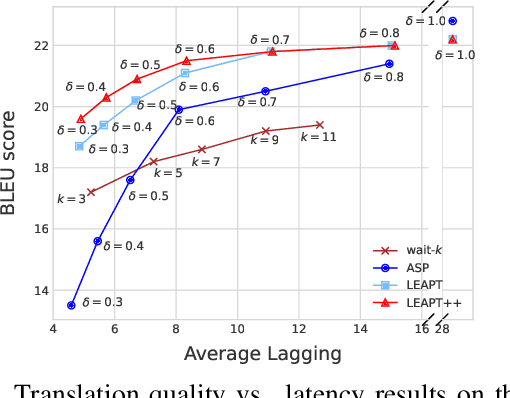
Abstract:Simultaneous machine translation, which aims at a real-time translation, is useful in many live scenarios but very challenging due to the trade-off between accuracy and latency. To achieve the balance for both, the model needs to wait for appropriate streaming text (READ policy) and then generates its translation (WRITE policy). However, WRITE policies of previous work either are specific to the method itself due to the end-to-end training or suffer from the input mismatch between training and decoding for the non-end-to-end training. Therefore, it is essential to learn a generic and better WRITE policy for simultaneous machine translation. Inspired by strategies utilized by human interpreters and "wait" policies, we propose a novel adaptive prefix-to-prefix training policy called LEAPT, which allows our machine translation model to learn how to translate source sentence prefixes and make use of the future context. Experiments show that our proposed methods greatly outperform competitive baselines and achieve promising results.
Spatio-temporal Tendency Reasoning for Human Body Pose and Shape Estimation from Videos
Oct 10, 2022
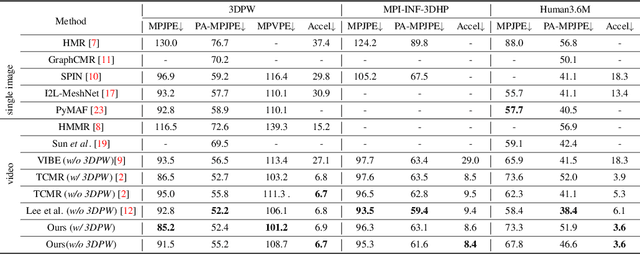
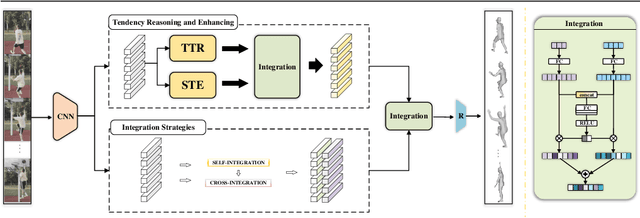
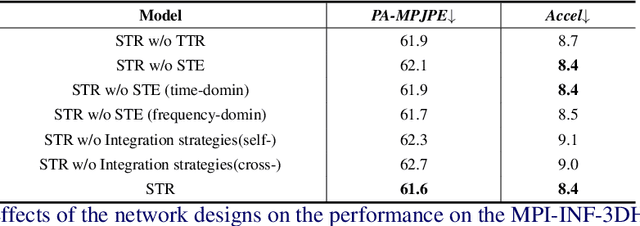
Abstract:In this paper, we present a spatio-temporal tendency reasoning (STR) network for recovering human body pose and shape from videos. Previous approaches have focused on how to extend 3D human datasets and temporal-based learning to promote accuracy and temporal smoothing. Different from them, our STR aims to learn accurate and natural motion sequences in an unconstrained environment through temporal and spatial tendency and to fully excavate the spatio-temporal features of existing video data. To this end, our STR learns the representation of features in the temporal and spatial dimensions respectively, to concentrate on a more robust representation of spatio-temporal features. More specifically, for efficient temporal modeling, we first propose a temporal tendency reasoning (TTR) module. TTR constructs a time-dimensional hierarchical residual connection representation within a video sequence to effectively reason temporal sequences' tendencies and retain effective dissemination of human information. Meanwhile, for enhancing the spatial representation, we design a spatial tendency enhancing (STE) module to further learns to excite spatially time-frequency domain sensitive features in human motion information representations. Finally, we introduce integration strategies to integrate and refine the spatio-temporal feature representations. Extensive experimental findings on large-scale publically available datasets reveal that our STR remains competitive with the state-of-the-art on three datasets. Our code are available at https://github.com/Changboyang/STR.git.
 Add to Chrome
Add to Chrome Add to Firefox
Add to Firefox Add to Edge
Add to Edge